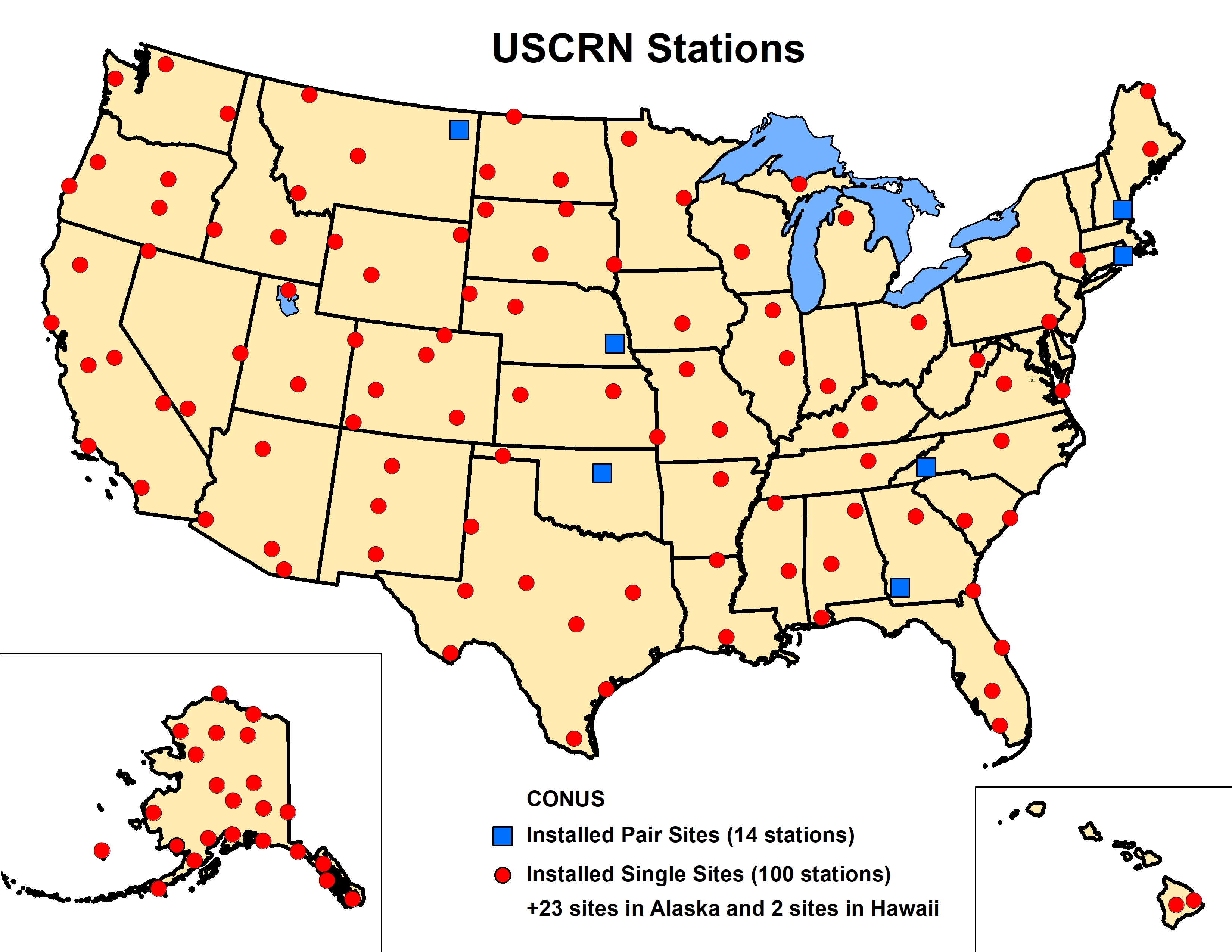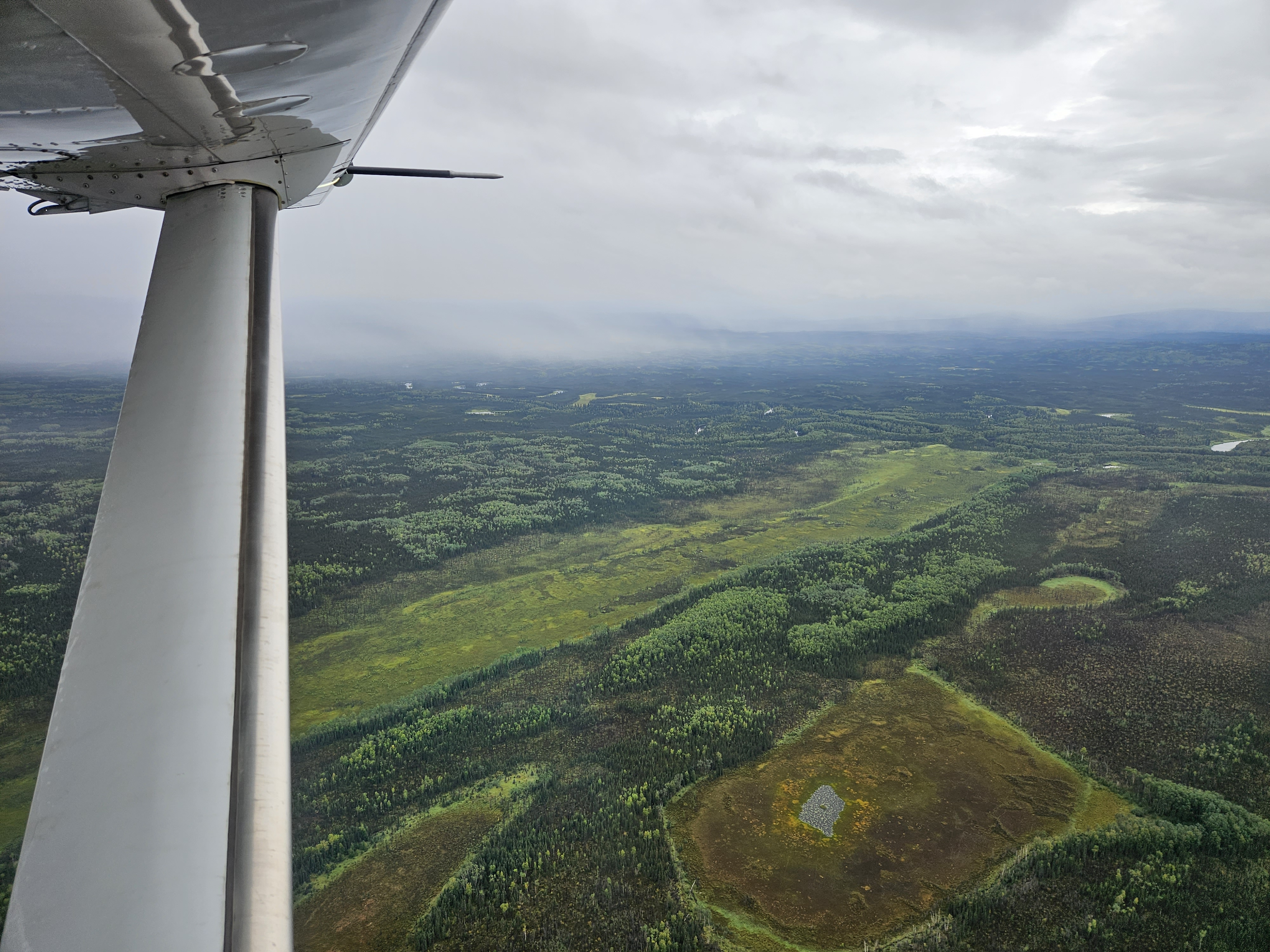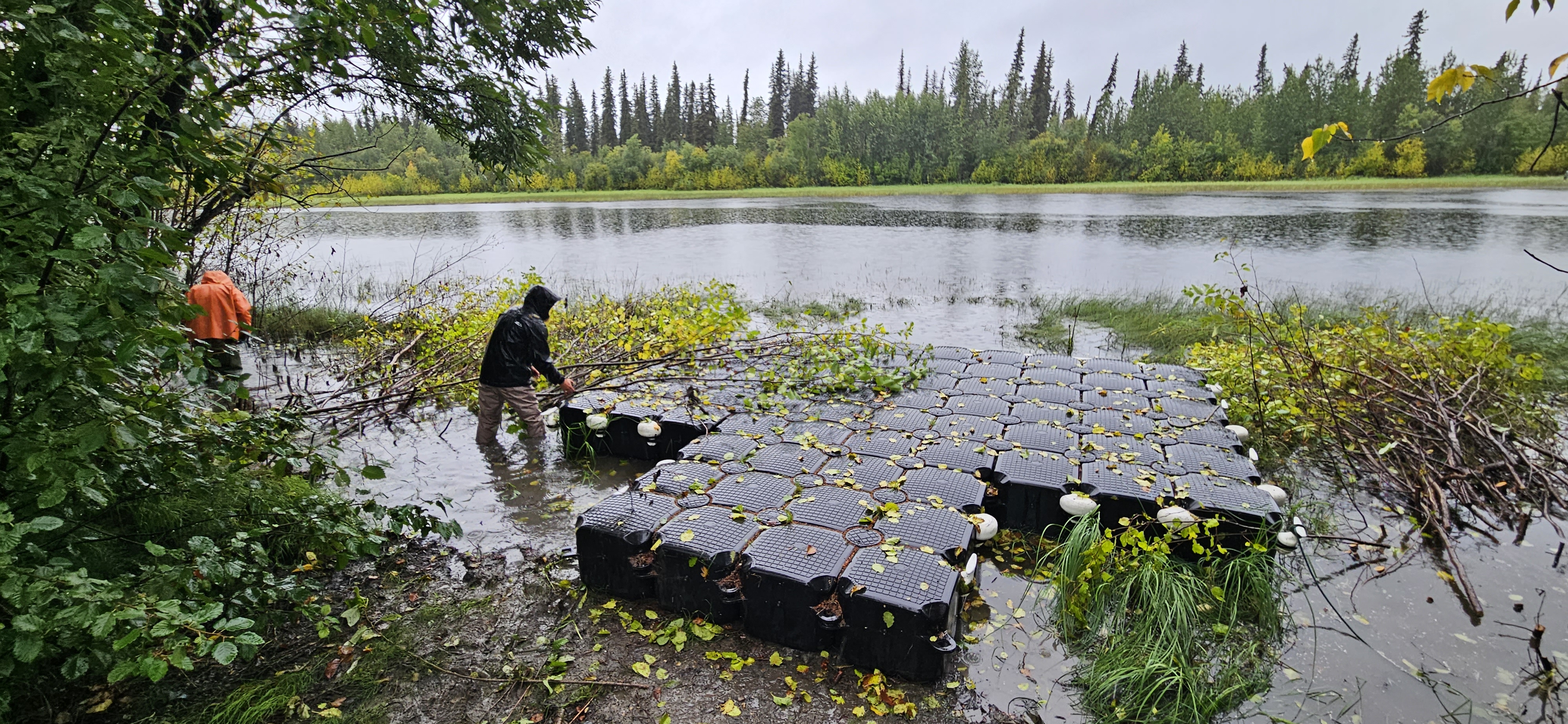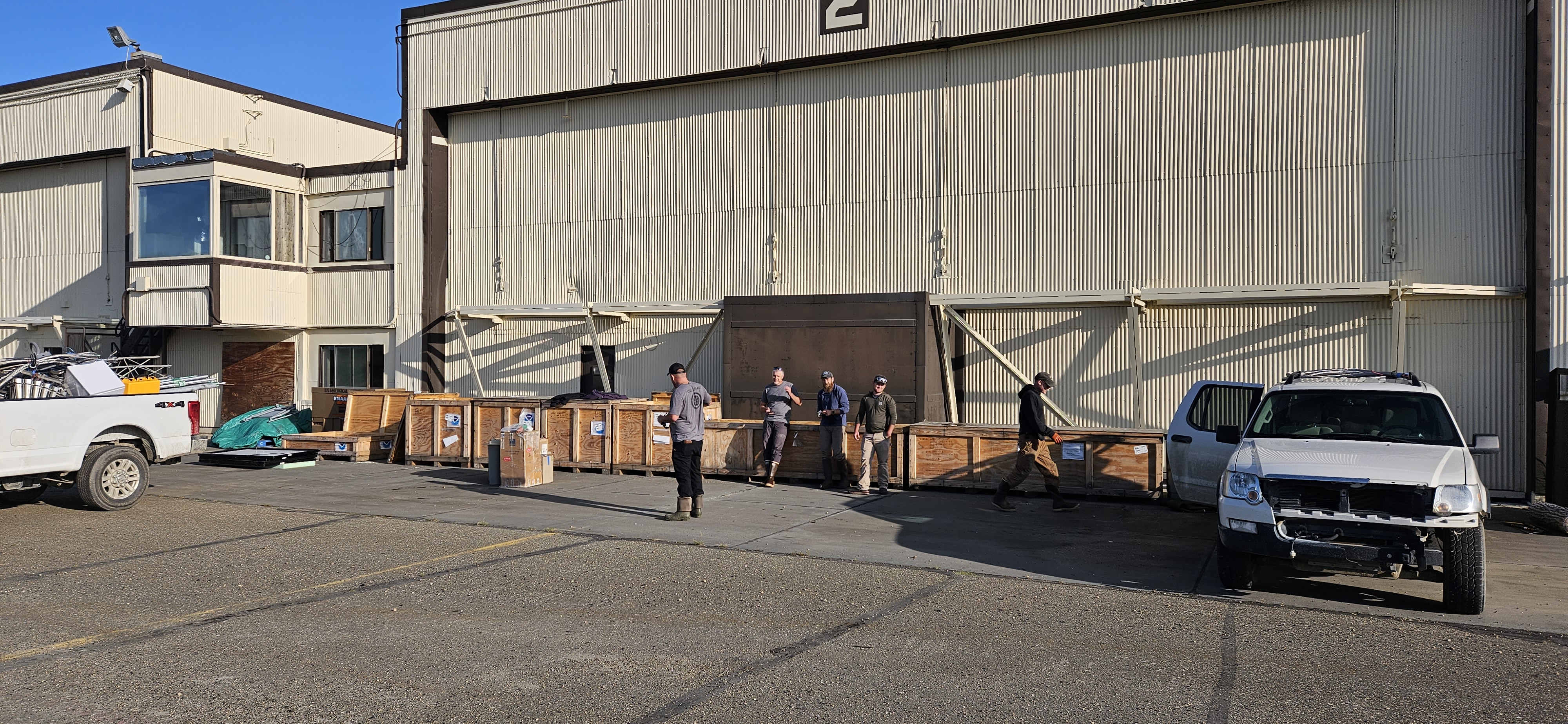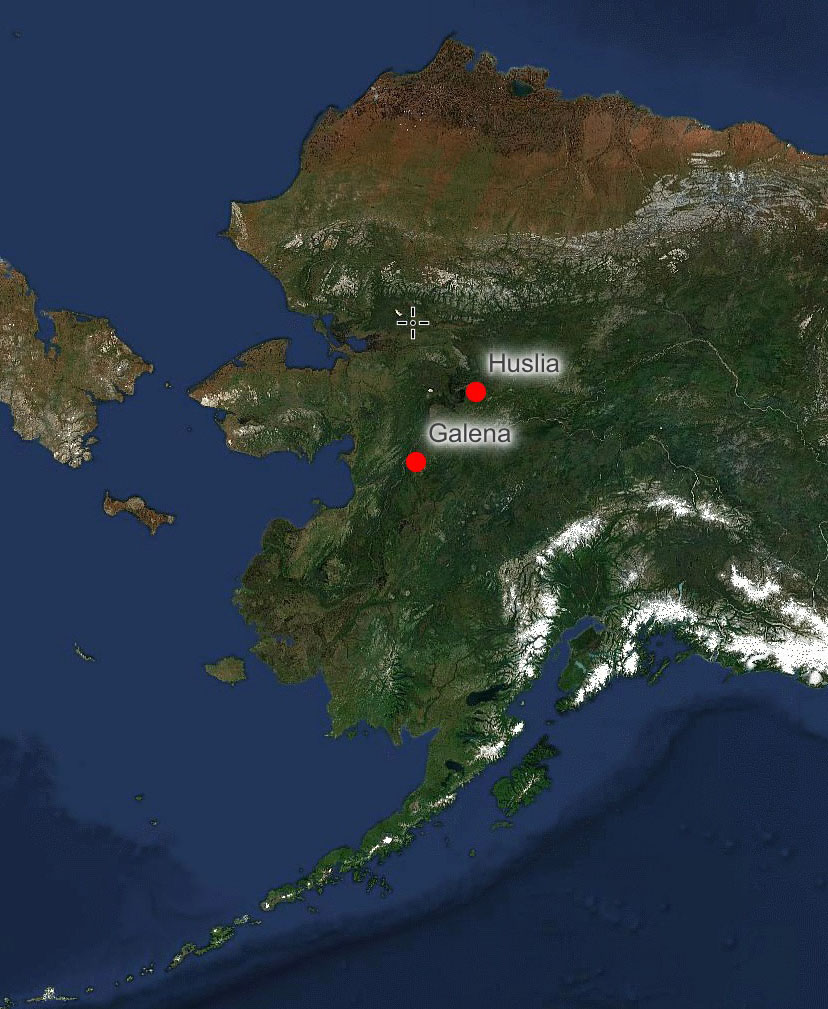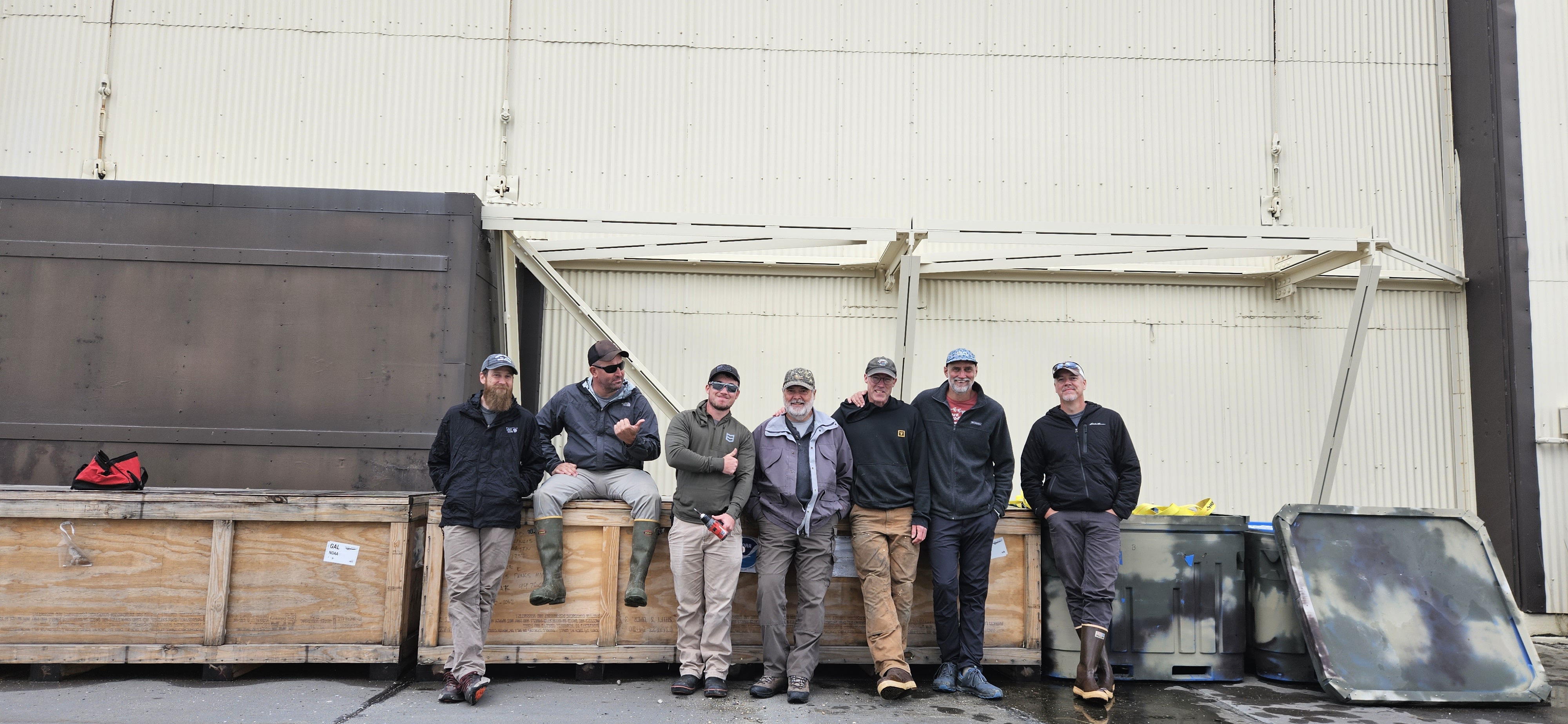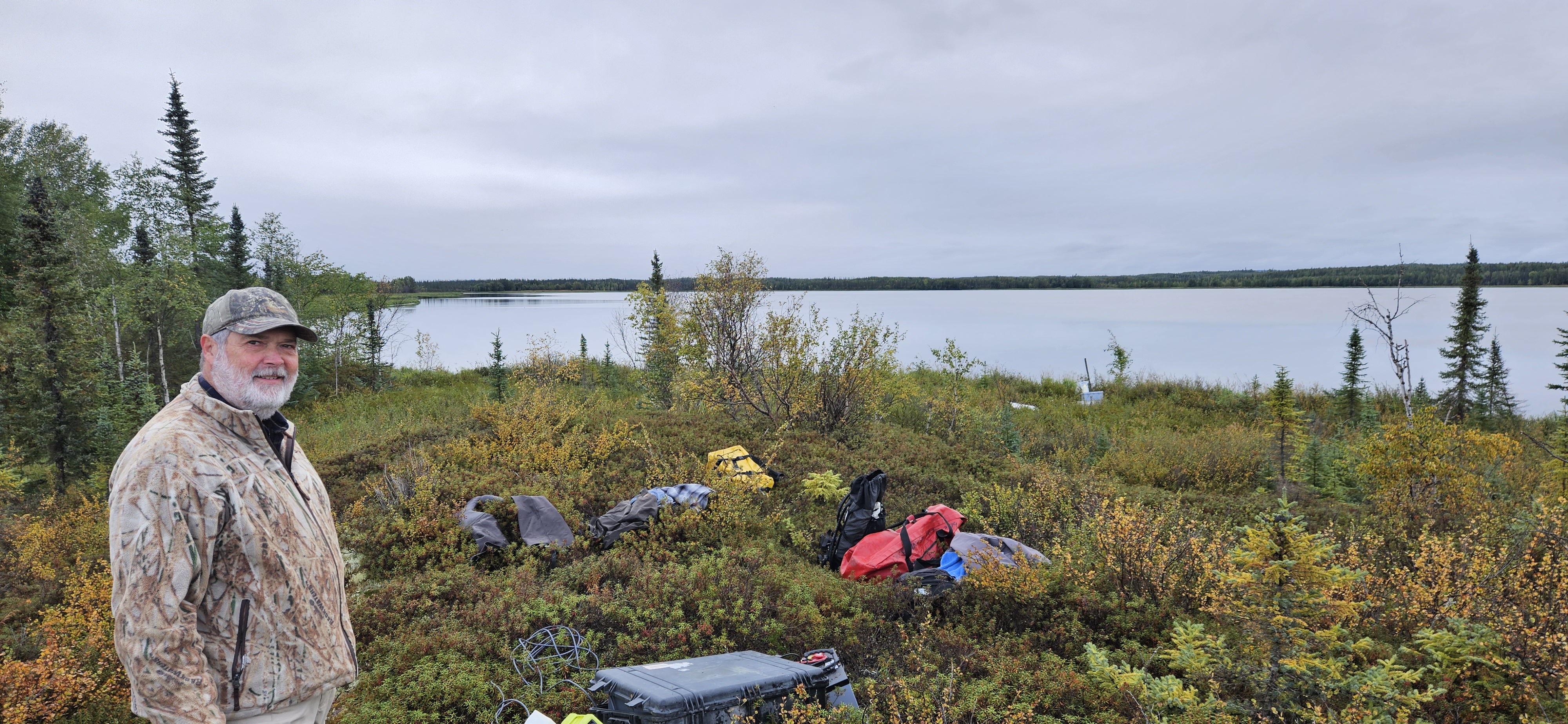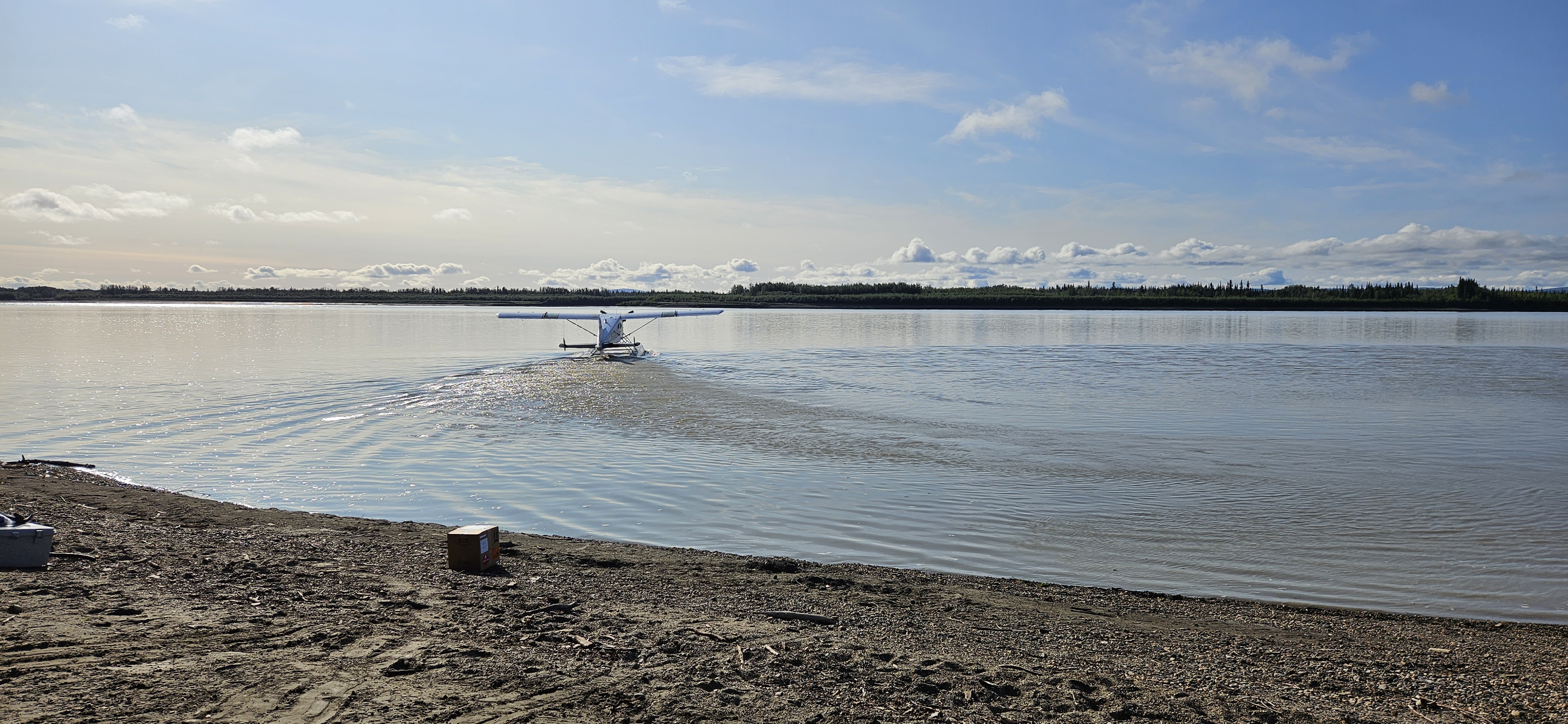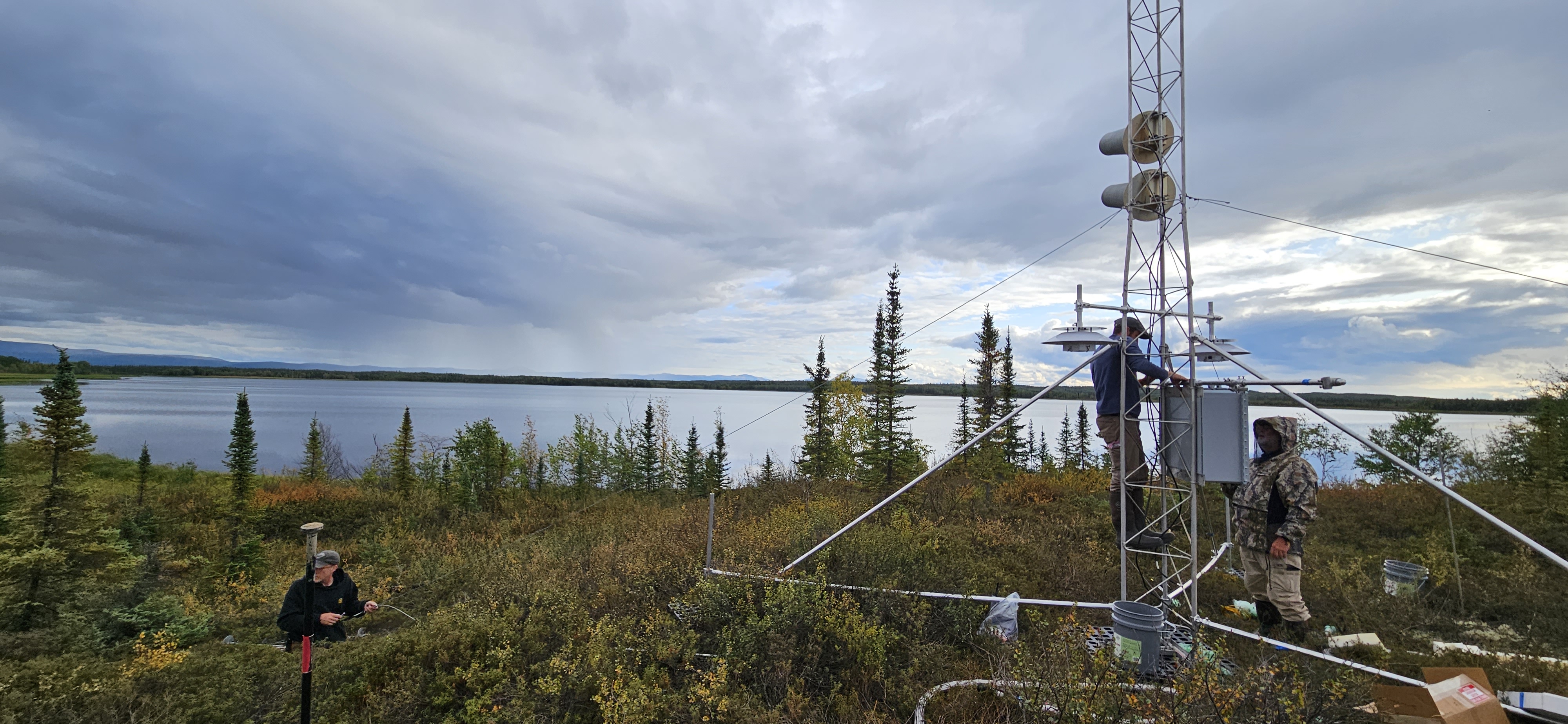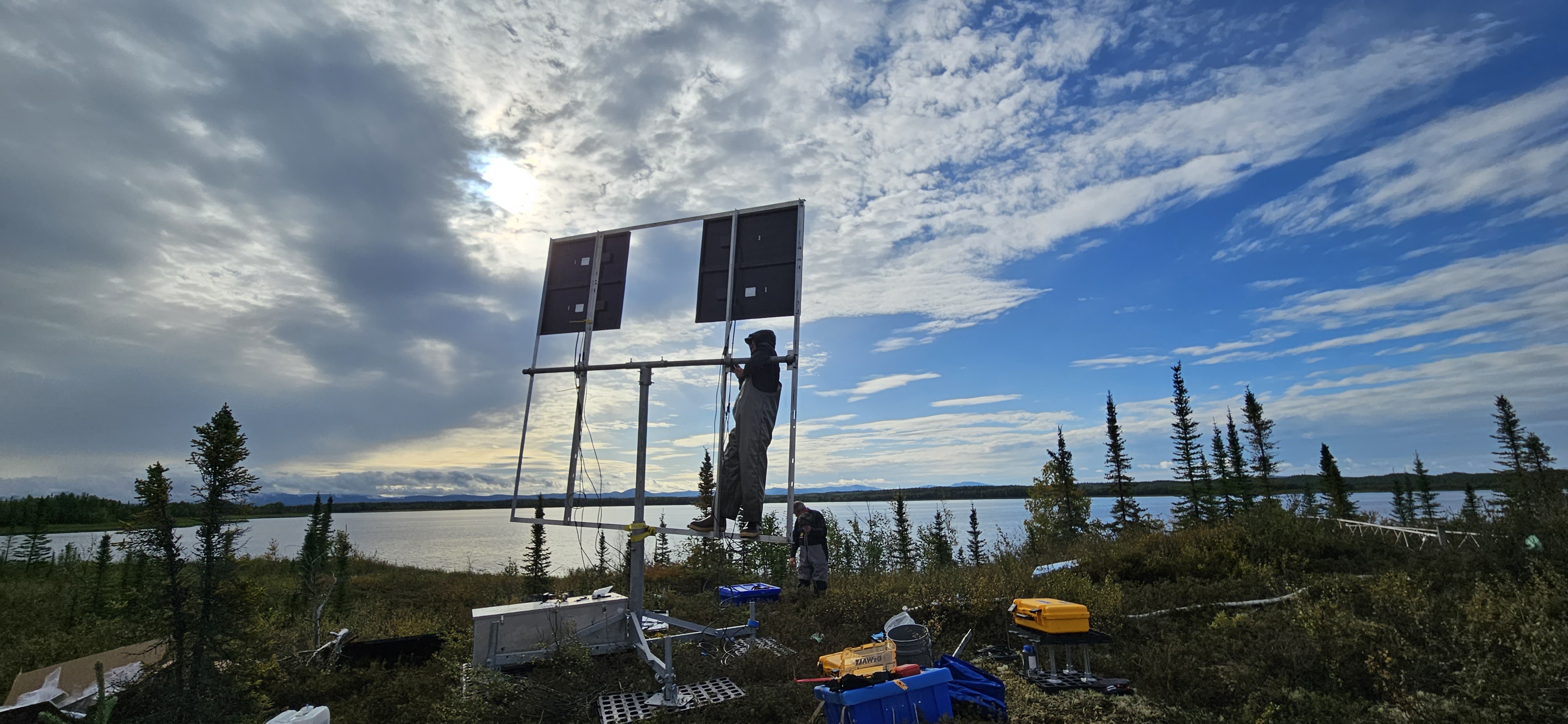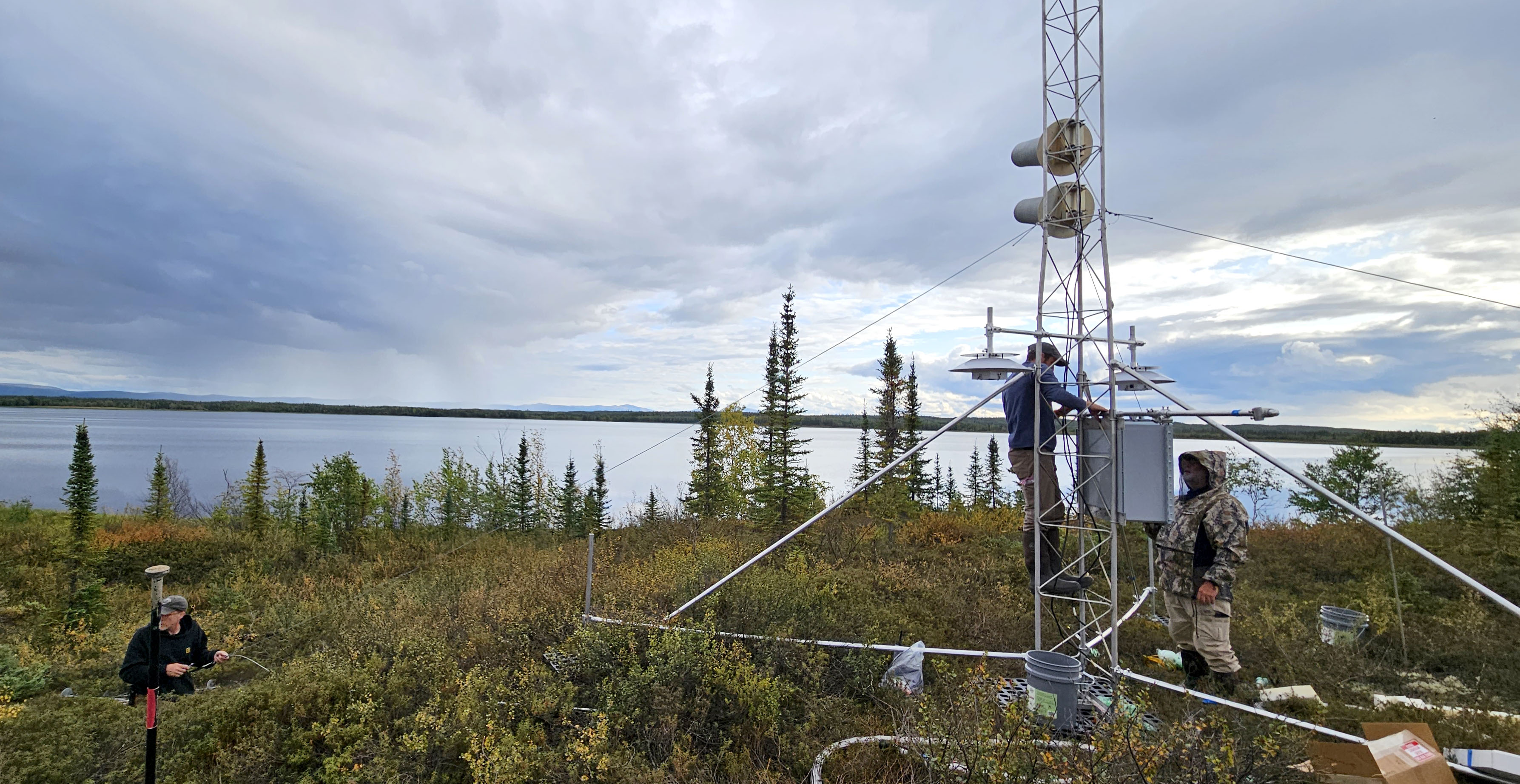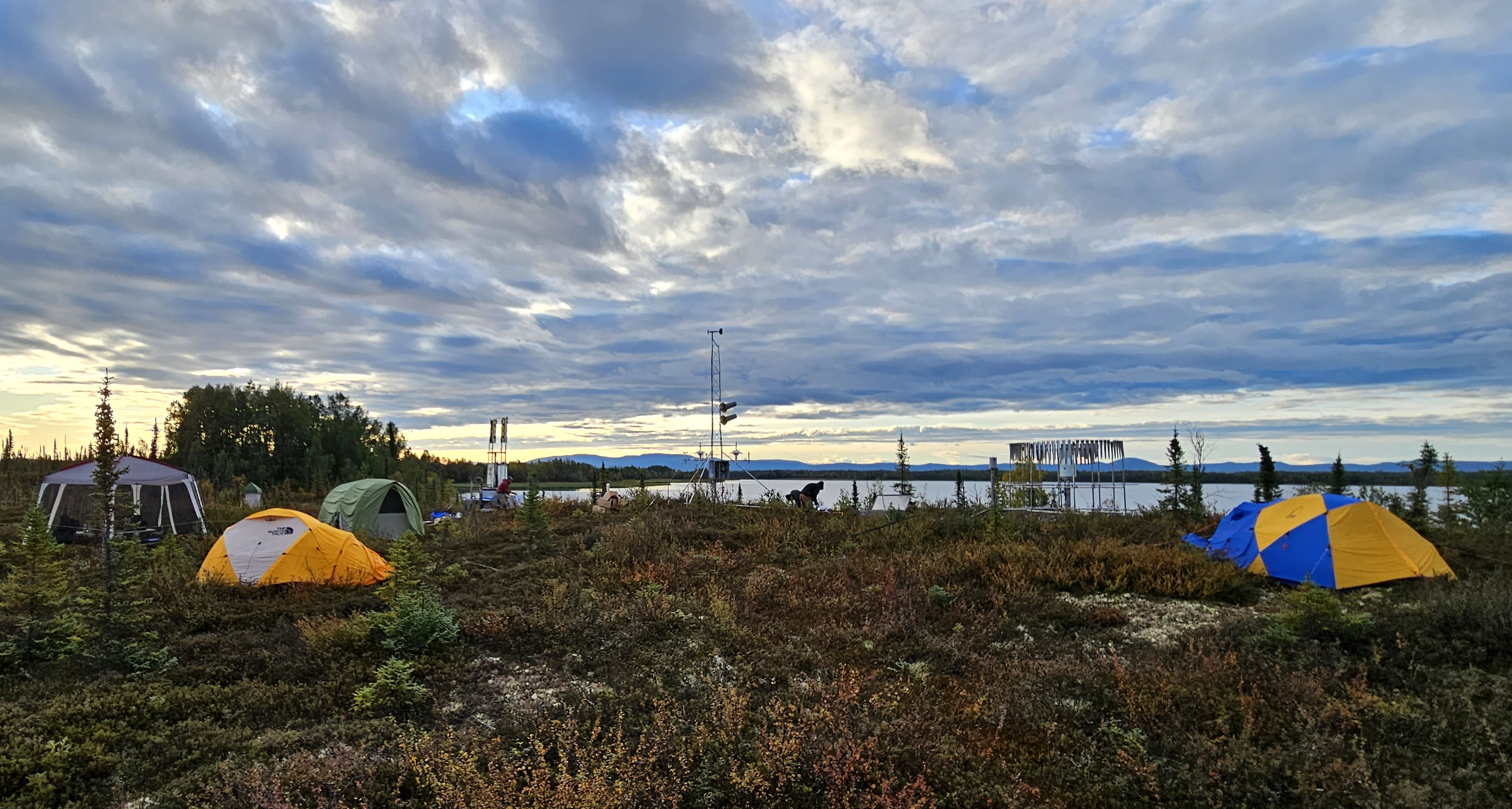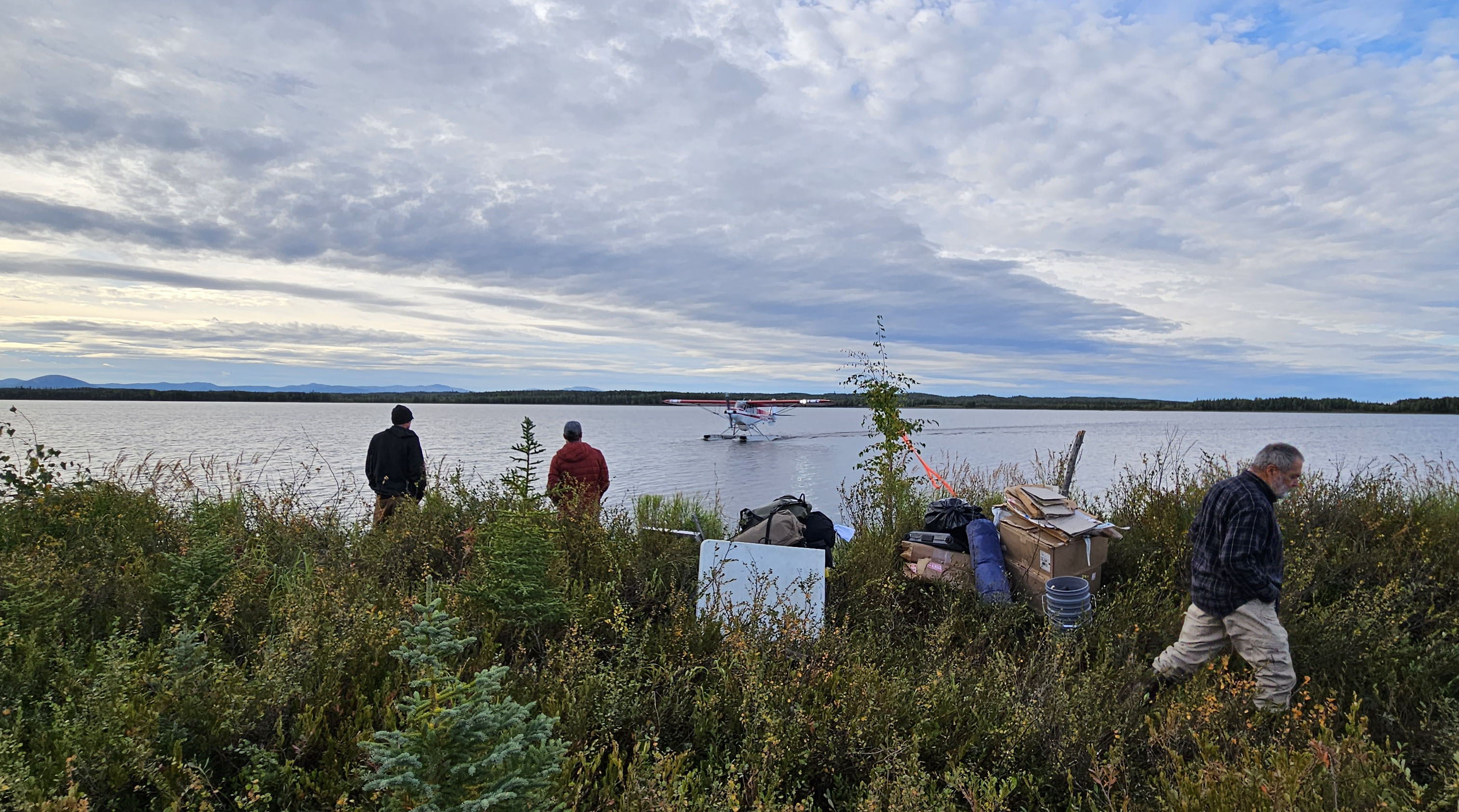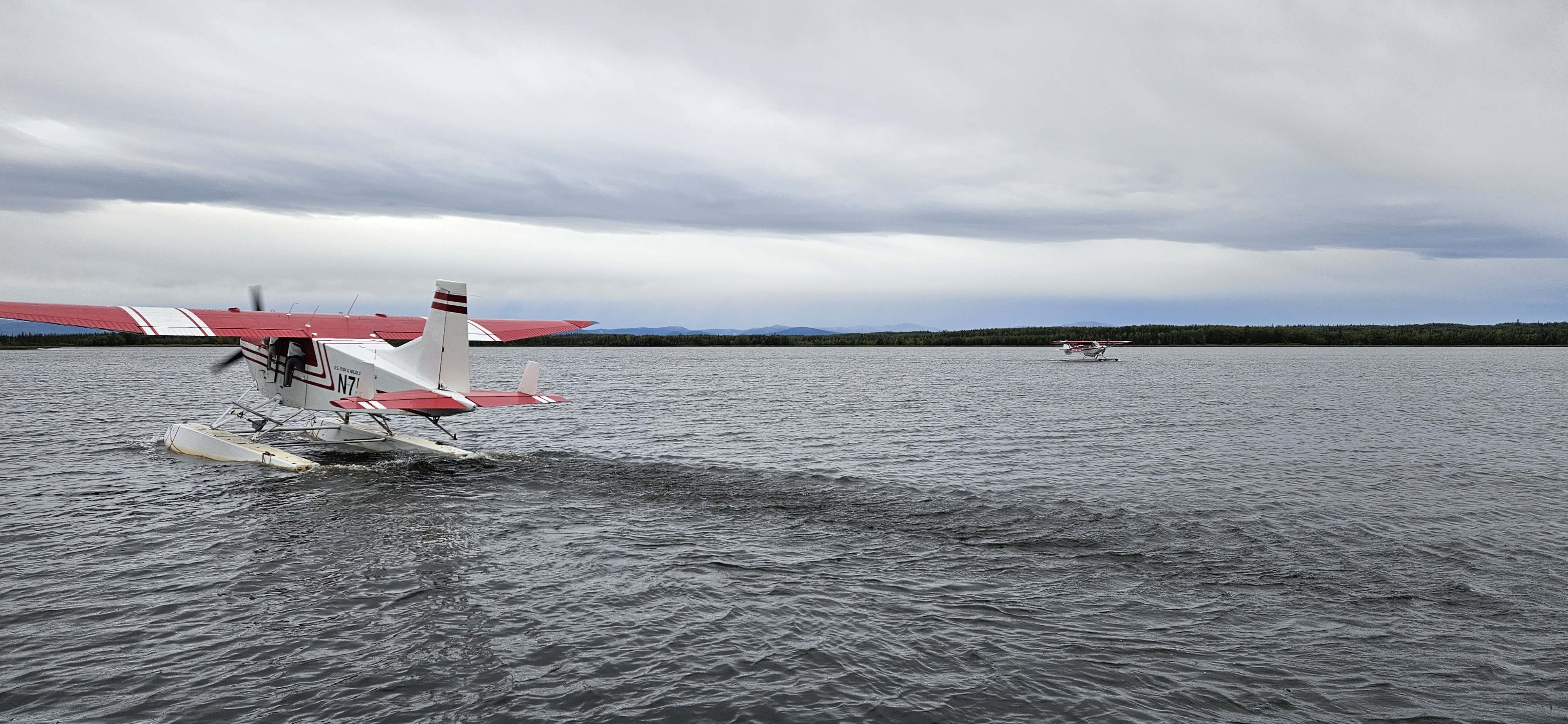August 25-30, 2023
One of ARL’s main programs is to install, maintain and update numerous U.S. Climate Reference Network (USCRN) installations. The USCRN is a network of over 120 climate monitoring stations with sites across the conterminous U.S. as well as Alaska and Hawaii. The goal of the program is to provide a continuous series of climate observations for monitoring trends in the nation’s climate and supporting climate-impact research. These stations use high-quality instruments to measure temperature, precipitation, wind speed, soil conditions, and more. Data from the USCRN are used in a variety of climate monitoring and research activities that include placing current climate anomalies into an historical perspective.
Most USCRN stations are remote, and that is by design to remove the influence of cities, industry and human activity. Some are deep in wildlife refuges, and traveling to each site annually often presents unexpected challenges. COVID travel restrictions had slowed the rate of installation of new sites in Alaska, which is best done in the summer due to the rugged terrain. Even so, conditions are still pretty rugged in August, as you will see below.
Most of these field notes are written by John Kochendorfer, ATDD Acting Director.
Friday August 25, 2023
USCRN Technical Lead Mark Hall and ATDD Acting Director John Kochendorfer flew from Fairbanks to Galena. Brandon McCloy – he had already been in Alaska for two weeks doing annual maintenance visits, along with Chuck Lindsey who contracts with ARL supporting CRN, greeted them at the Galena airstrip and took us to the Fish and Wildlife bunkhouse. Brandon and Chuck had arrived in Galena on Thursday. We met with Fish and Wildlife pilot Brad Scotton to borrow some camping equipment and discuss logistics, such as the best way to load and fuel the chartered float plane that was scheduled to arrive Aug 27 from Anchorage. The charter pilot also needed our help getting his fuel truck and aircraft dock in Galena ready to use for refueling his aircraft when he arrived, so we spent some time working on that.
Saturday, August 26, 2023
The rest of the ARL team, including Josh Blackwell, Blake Randolph, and Zack Henderson, arrived in the morning and spent some time going through equipment that had been packed earlier to ensure everything had arrived.
The first task was to move the dock. John, Chuck, Brandon and the son of a US Fish and Wildlife pilot rowed a borrowed dock back from the Fish and Wildlife float plane and boat dock to the home/bunkhouse/dock/fueling station that belongs to the charter pilot. The teen was the worthy captain of our vessel. Because the level of the lake was high, we had to clear trees on either side of the newly relocated dock to allow the pilot to pull his aircraft up to the dock without damaging its wings. After that we succeeded in getting the charter pilot’s truck running and liberated from its parking spot, which involved moving another vehicle, installing a battery in the truck, and filling the truck’s flat tire with air.
Due to a storm affecting much of Alaska, our charter pilot informed us that he wouldn’t be able to fly from Anchorage to Galena over the Alaska Range (which includes 20,000′ tall Denali), on Sunday August 27. Our arrival day and time was uncertain due to weather affecting their ability to fulfill obligations to other customers, so we had to wait, and hope for the best.
Sunday, August 27, 2023
On the morning of August 27 the pilot informed us that he was hoping to make it to Galena on August 28, so we removed the lids from our crates, inspected the boat ramp (which is really just a gravel bank connected to a road), and made plans and contingencies for the following day, based on different potential arrival times of the plane.
Monday, August 28, 2023
The two sites names are:
Galena, where Josh, Blake, and Zack are hopefully headed today, and
Huslia, where Mark, Brandon, Chuck, and John will hopefully be headed tomorrow.
The plan for the first flight today is to transport the Galena team in with their camping equipment and as much of the site equipment as the plane will hold. Two more flights will likely be required to deliver the rest of the Galena materials. We’ll get as much done as we can today, but it all depends on the pilot, the plane, and the weather.
Once those flights are complete, the Huslia team will split up, with two people flying in with camping gear and equipment on the first flight. The last half of the Huslia team will fly in with the last load of equipment. If we are all in place by the end of the day Tuesday it would be great. Then the charter is over, and the real work begins. Two or three days of hard labor will be required to move, assemble, and test everything.
U.S. Fish and Wildlife pilot Brad Scotton will pick us all up when we finish. Both of the U.S. Fish and Wildlife float planes are too small to transport all the site equipment into the site, and only the smallest aircraft (with room for only one passenger) can land at the Galena site, because the lake near that site is smaller, meaning that there is less room to land and take off. Because of this, the Galena team has to be more careful with the size of the equipment that they will need to bring back with them, which will be mainly camping equipment.
The Galena team hopes to fly to Fairbanks on Friday, where they may be able to complete the last two Alaska Annual Maintenance Visits (AMVs) before returning home. Those two AMVs remain incomplete because they were inaccessible on previously scheduled attempts to reach them this year. But our highest and first priority is to get these two sites near Galena up and running. A lot of resources have been invested in preparing for this, and everyone wants to see it done.
Working in Alaska requires a lot of planning, but even the best laid plans can fail up here. The biggest source of uncertainty is transportation, which often involves small aircraft, and is subject to delays and cancellations due to mechanical issues and weather.
Being new to working in Alaska in support of the USCRN, I have already learned that the success of the program is built on relationships fostered by the ARL staff. When it comes to shipping, transportation, storage, and all the other logistics that go into running the CRN, the most valued currency in Alaska is good will. We get A LOT of support from people who live and work in Alaska, and without their willingness to help, the USCRN would suffer greatly. These people are willing to help due in large part because ARL technicians and engineers are respectful of the ways that things work in Alaska.
Tuesday, August 29, 2023
The aircraft arrived yesterday at about noon. After four flights and a lot of loading and unloading, the first team and all of their equipment is at the Galena site! The second team finished preparing for the next day’s flights to the Huslia site at about 10 pm, and was asked by the pilot to be ready to go by seven the next morning. Two people will fly to the site on the first flight, and begin surveying and setting up camp, and the other two will remain behind to load equipment for the subsequent flights. We may have one person fly back and forth with the equipment, because loading and unloading some of the heavier equipment requires more than three people.
Wednesday, August 30, 2023
Mark, John, Brandon, and Chuck are at the Huslia site, along with all the gear. Camp is setup, and the equipment has been transported from the lake to the station location. It is almost 100 yards from the lake edge to the location of our camp and the station, on high and dry ground above the lake, and we made the trip many times, often carrying very heavy loads.
It was a long back-breaking day. Choosing a spot to get ashore and moving all the gear off the plane onto shore also proved more difficult than anticipated, as the lake was too deep to stand in, and in most places the shore consisted of a grass-covered swamp. The first step that Mark Hall took off the plane left him stuck in the soft-bottomed lake above his waist, with flooded hip boots. Both teams each have one person who has gotten wet, as Josh also got soaked while unloading.
We have picked out spots for the solar panel array, the insulated power station box for the batteries and the methanol fuel cell generator, the meteorological tower, and the precipitation gauges and their wind shield. Tomorrow we begin putting it all together. 10 pm here and still light out. Full stomach, tired legs, and a sore back. Glad to be laying in a warm, dry tent.
Late Wednesday, August 30, 2023
The first team finished up and was shuttled out on Wednesday. The second team pushed hard on Wednesday, because the Fish and Wildlife pilots wanted to pick us up beginning on Thursday morning. The weather was forecast to worsen on Friday, potentially making it unsafe to fly us back to Galena. One of the pilots also wanted to leave Galena for a funeral. So, we were on the clock. We worked until 10:30 pm, ate dinner, went to bed at midnight, and were up again at 6am Thursday.
Thursday, August 31, 2023
On Thursday morning, we skipped breakfast, finished installing and validating the precipitation gauges, and finished up on the logger and meteorological sensors on the tower.
We then started packing everything up, waiting for aircraft, and hauling our stuff back to the lake. Three flights, using two different aircraft, were required to bring us all back to Galena where the first team was waiting for us. I was completely exhausted. We unloaded and then it was back to the bunkhouse, where I took a much needed nap.
The Cafe in Galena, which is the only restaurant in town, has burger night on Thursday and Friday. Burger night is the only night they serve dinner, and the only thing on the menu is burgers. But the people that run the place are friendly, and the burgers are delicious. So we ordered burgers, and ate them back at the bunkhouse.
About the US Climate Reference Network.
The USCRN program aims to provide a continuous series of climate observations for monitoring trends in the nation’s climate and supporting climate-impact research. The U.S. Climate Reference Network (USCRN) is a systematic and sustained network of climate monitoring stations with sites across the conterminous U.S., Alaska, and Hawaii. These stations use high-quality instruments to measure temperature, precipitation, wind speed, soil conditions, and more.
USCRN stations are managed and maintained by the Air Resources Laboratory, NOAA Office of Oceanic and Atmospheric Research. Oak Ridge Associated Universities (ORAU) provides engineering and technical support for USCRN. The National Centers for Environmental Information maintains and distributes the USCRN observations and derived climate products.
